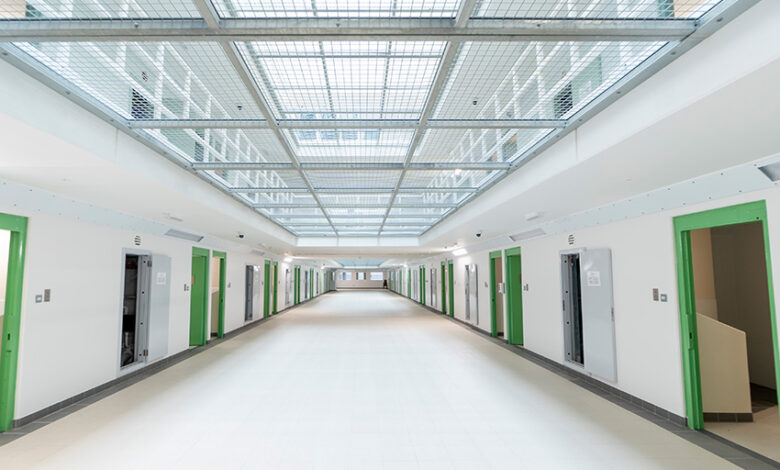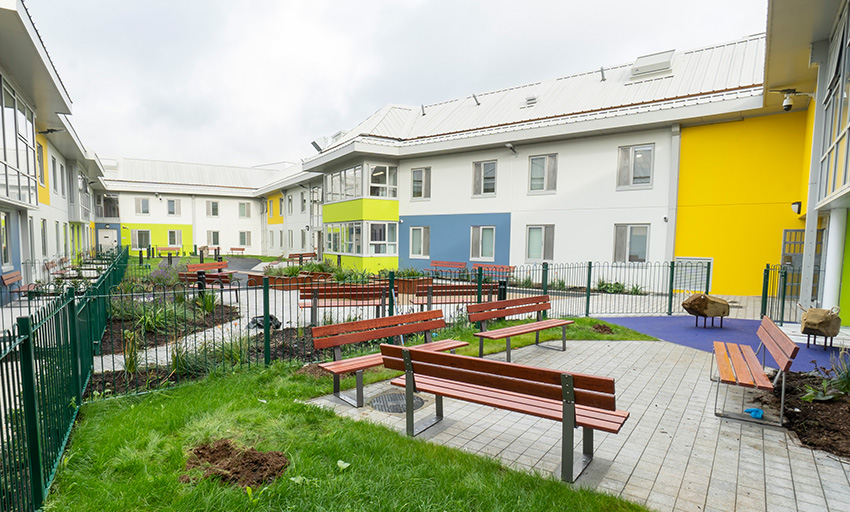A new strategic plan for the Irish Prison Service

Throughout 2023 the Irish Prison Service has worked on drafting a new strategic plan. It has been informed through extensive consultation with staff and stakeholders, including the Department of Justice; the Office of the Inspector of Prisons; the Probation Service; staff representative bodies; the Visiting Committees, and people in our custody, writes Irish Prison Service Director Donna Creaven.
The implementation of the plan will be guided and underpinned by our vision, mission and values of teamwork, integrity, potential, safety, and support.
The strategic plan has been informed by challenges we face and our experiences in the context of current societal challenges and the evolving expectations of our stakeholders. As we look to the future, we will focus on a number of themes to support our aims to consolidate and increase the service capacity to people in our custody, making them more accessible, and to continue collaboration with our stakeholders to progress penal and public service reform.

We have learned much from our experience over the last strategic cycle. Throughout the last number of years, in parallel to the organisational response to managing the pandemic, we were successful in continuing to realise our goals, including completion of the new accommodation in Limerick Prison; repurposing a unit in Mountjoy Prison to accommodate older male prisoners who have special requirements as they age; the completion of the installation of in-cell telephony, which provides an enhanced platform for prisoners to maintain links with their family, friends, and prisoner services; and the implementation of video link for family visits and court hearings.
We are facing many challenges with rising numbers in our custody: an ageing prisoner population; addressing the mental health needs of people in our custody and maintaining services during times of rising costs; and a tight labour market. As the prison population rises, we face increased demand for the provision of effective interventions and support aimed at promoting desistance and reducing reoffending.
The new strategy details the strategic pillars, initiatives and priorities, and outlines a timeframe in the roadmap for delivery whilst being cognisant of the short-term business needs of the Irish Prison Service:
• Prisoner pathways: We will evolve existing and develop alternate prisoner pathways to better reflect sentence types, increase capacity within the system, and achieve better outcomes for prisoners.
• Employee experience: We will continue to embed a person-centred innovative, collaborative, and transparent culture that reinforces our efforts to renew the organisation, underpinned by more efficient and effective people processes.
• New business processes: We will continuously improve the quality of services provided to our stakeholders through new business processes that place collaboration, innovation, and communication as the foundational principles for our ways of working.
• Digital platforms: We will modernise our services through digital development that enable accessible, transparent, and tailored services, support innovation and improve effectiveness in a cohesive and holistic manner.
• Governance framework: We will strengthen our internal controls and governance arrangements to support corporate capacity and maintain and ensure consistency, transparency, and accountability for the services we provide on behalf of the State. This is a particular priority in the coming year as the Irish Prison Service prepares to go forward on a statutory footing as a scheduled office.

Transforming custody through technology
The new plan is ambitious, particularly under the digital transformation agenda. Digital transformation as a universal phenomenon has created a new reality in prisons. The use of technology in custodial settings transforms rehabilitation and services, promotes digital literacy, digital citizenship, social skills, self-esteem, and reintegration into society. Current rehabilitation practices and policies in our prisons are mostly offline and do not cater for the digital realms. The use of digital to support rehabilitation will facilitate transition back into society and ensure an improved post-prison quality of life in a technologically advanced society. The technology-dependent world that people exiting custody must now re-enter requires the use of touch screens, computers, and the Internet, but many have not received training in how to operate these types of internet-enabled processes.
In recent years, we have pivoted our focus to how we can use technology to create and deliver modern services in our prisons. Four broad areas where technology supports a modern service include:
- digital service delivery for people in care;
- digital service delivery for staff and partners;
- electronic security of prisons; and
- digital prison building management.
Delivery and access to services for people in custody encompasses health and wellbeing; education; language; culture and identity; prison operations, such as biometric movement; self-serviced kiosks; and visits.
Digital service delivery for staff and partners includes the enablement of digital ways of working for staff and other people onsite in our prisons to help them do their jobs more safely, and accurately, for processes such as viewing essential prisoner information, prisoner sentence management, building maintenance, and inventory management.
Managing the long-term maintenance and sustainability of a prison, including optimising physical workflow can be supported through the use of digital tools such as monitoring environmental conditions through sensors, and enable control and automation of operational processes, and optimisation of electricity usage within cells and other spaces.
The benefits under this agenda will support an improved safety environment in the prison through increasing time available for staff to have meaningful engagements with people in their care; and enable real-time access to information, reducing time spent completing paper-based tasks. Using digital to support rehabilitation will encourage people in our care to adapt to a digitally enabled environment and prepare them for using online learning tools and increase connectedness with the outside world and preparation for life outside in an easy to use and accessible format.
Our approach to implementing digitally supported service delivery is about using technology to make services available to people where and when they will make the most impact on that person’s life or work. For people in care, this should mean making the most of services we know have a humanising and rehabilitative impact, and ensuring they are available and accessible. For our staff and partners, greater use of technology in day-to-day activities will help improve safety and contribute to our wider drive to modernise our ways of working.
W: www.irishprisons.ie






